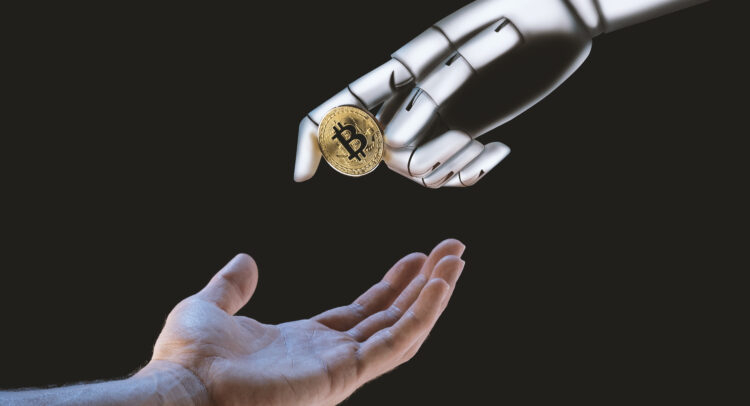The speculative world of Bitcoin mining and the resource-intensive power of artificial intelligence (AI) firms might not seem like obvious partners. However, a new trend is emerging where these seemingly different ends of the tech sector are finding synergies and forging strategic alliances.
Claim 70% Off TipRanks This Holiday Season
- Unlock hedge-fund level data and powerful investing tools for smarter, sharper decisions
- Stay ahead of the market with the latest news and analysis and maximize your portfolio's potential
As with most successful business partnerships, this has advantages for both operators. Bitcoin miners are now struggling with mining rewards that were halved earlier this year and crimped profits due to high energy costs. The mining companies have built vast data centers over the past decade and a half, facilities packed with powerful computing resources suitable for running complex AI algorithms. AI’s growth curve can take advantage of this excess computing power.
A Match Made in Data Centers
AI companies are struggling to keep up with the surging demand for high-performance computing (HPC) power, and building data centers is a time-consuming and expensive endeavor. This is where Bitcoin miners can monetize the computing power they built and develop a more consistent income stream. Together, it is a faster and more cost-effective solution to AI’s capacity issue, and provides steadier income to Bitcoin mining centers.
A prime example is the recent deal between Core Scientific (CORZ), a major Bitcoin miner, and CoreWeave (WEAV), an AI cloud provider. Core Scientific will lease out its data center space to CoreWeave, generating an estimated $4.7 billion in revenue over 12 years.
Is This the Start of a Trend?
This partnership isn’t a one-off. Other miners like Hut 8 (TSX:HUT) also invest in infrastructure upgrades to cater to AI companies’ needs. Additionally, companies like Hive (HIVE), with its suite of Nvidia (NVDA) GPU chips monetizing data centers, and Bit Digital (BTBT) are leveraging their existing hardware by renting out data center space to build large language models.
Bitcoin miners expect this shift towards AI to bring much-needed stability to their revenue streams. AI companies, on the other hand, can leap ahead without building from scratch readily available HPC resources, helping them accelerate their development plans.
Energy Consumption and Environmental Impact
Electricity consumption worldwide is up, while at the same time, many developed countries are trying to put a green lid on fossil fuel power generation. However, the growing demand for data centers makes the transition more daunting. AI and Bitcoin mining are known for their massive energy needs, straining grids, and raising environmental worries. For example, Google’s (GOOGL) data center expansion for AI has increased its greenhouse gas emissions by 48%, while Bitcoin mining consumes more energy than entire countries.
Key Takeaways
The collaboration between AI companies and Bitcoin miners presents a win-win situation for both businesses. The alliances leverage each other’s strengths. With the profitability of mining waning, companies gain access to much-needed computing power without the time and energy costs of building new data centers. Hut 8 and Bit Digital are also joining the trend, recognizing the surge in demand for high-performance computing infrastructure for AI. These collaborations can potentially optimize resource allocation and address the ever-growing need for AI technologies.
















